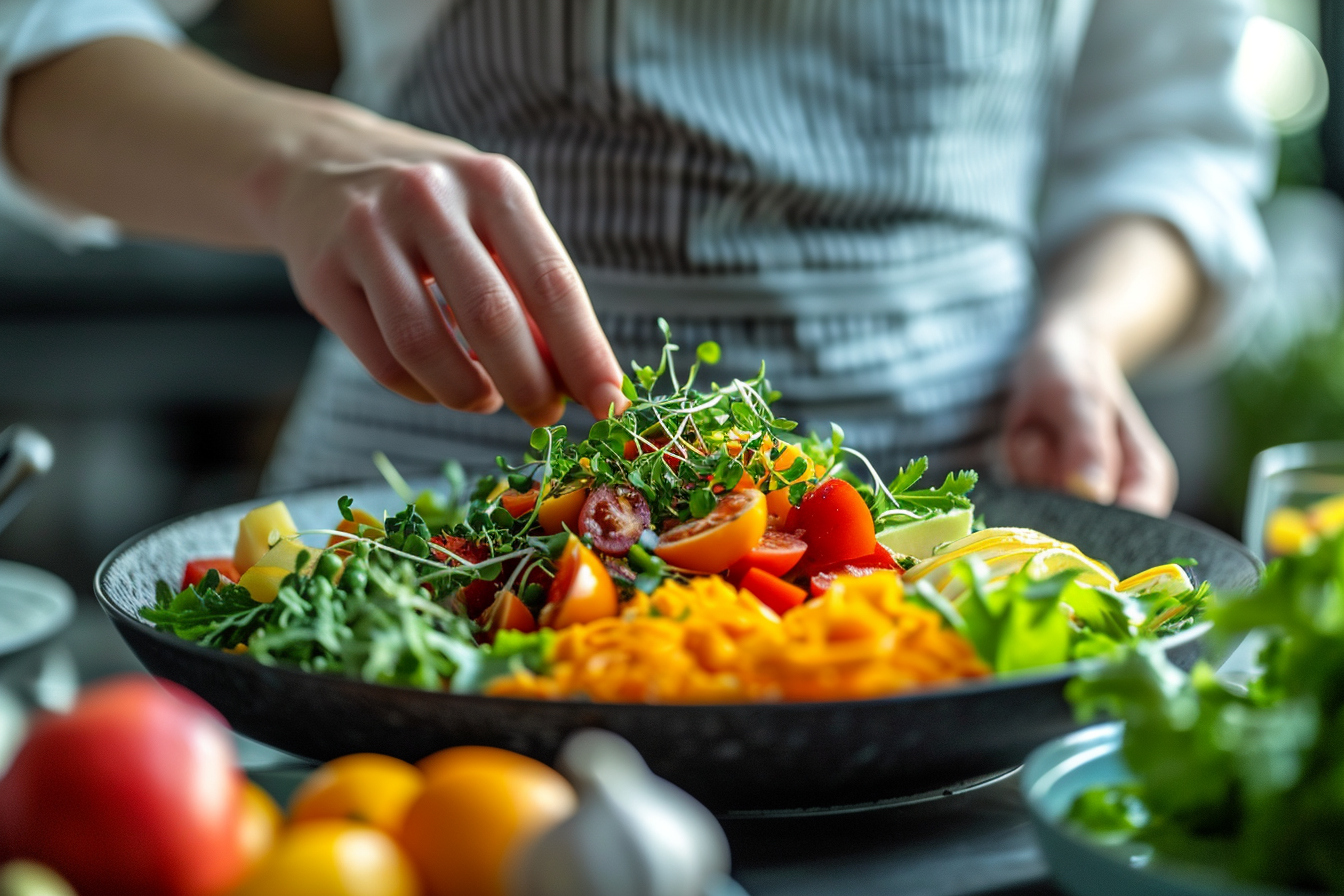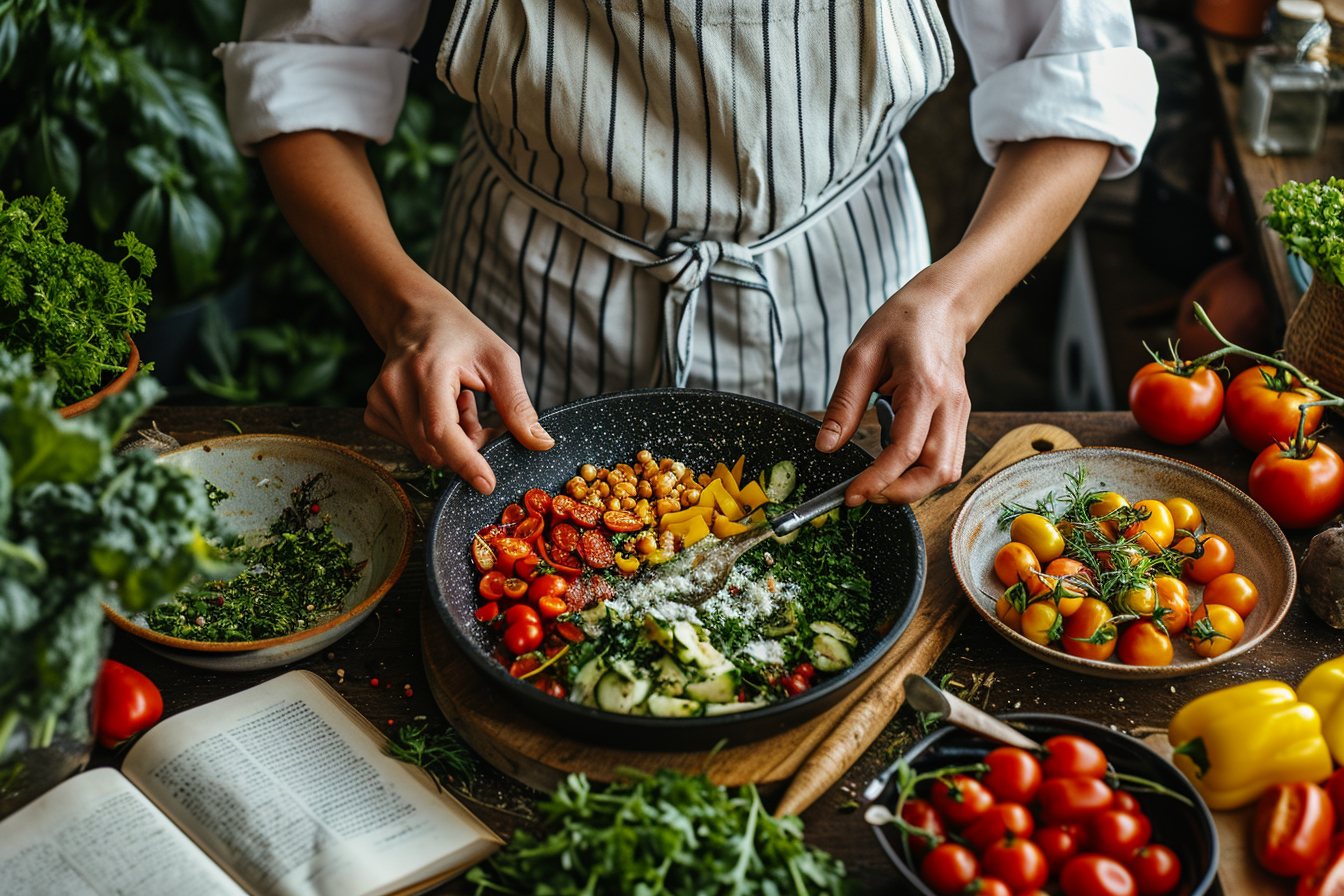
Embracing a raw vegan lifestyle offers a multitude of health benefits and spurs creativity in the kitchen. No-cook cuisine is underpinned by the principle that heating food above 118 degrees Fahrenheit (48 degrees Celsius) can deplete its enzymatic value and destroy some of its vital nutrients. Thus, mastering such techniques can lead to the adoption of a diet replete with fresh, enzyme-rich meals.
The basis of vegan no-cook cuisine
The foundation of no-cook vegan cuisine is raw plant-based ingredients. These run the gamut from fruits, vegetables, nuts, seeds, sprouted grains, and legumes, to seaweeds and other superfoods. The integrity of these foods is retained by not exposing them to high temperatures, ensuring a nutrient-dense meal that is as close to nature as possible.
Understanding the importance of kitchen tools
In order to create diverse and satisfying meals, one must equip their kitchen with several essential tools. A quality food processor, a high-speed blender, a spiralizer, and a dehydrator expand the possibilities of what can be created. These tools allow for the preparation of dishes that mimic the textures and flavors of cooked food, such as creams, sauces, and even ‘baked’ goods.
Techniques for soaking and sprouting
Soaking and sprouting are fundamental techniques within vegan no-cook cuisine. These processes not only render nuts, seeds, and legumes more digestible but also activate their enzymes and increase their nutrient content.
Soaking: Place nuts or seeds in a bowl, cover them with water, and allow them to soak for a predetermined period, generally between four to twelve hours. This aids in reducing phytic acid, a compound that hinders mineral absorption.
Sprouting: After soaking, drain and rinse the seeds or legumes and then leave them to sprout in a jar or sprouting container. Keep them moist yet ventilated, rinsing a few times a day, until small sprouts begin to appear. These sprouts can now be used to add texture and nutrition to any dish.
Crafting flavorful dressings and sauces
A hallmark of scrumptious salads and veggie dishes are the dressings and sauces used. The art of crafting these condiments raw relies on blending healthy fats like avocados or soaked nuts with a variety of herbs, spices, and acidic components like lemon juice or apple cider vinegar. By mastering emulsifications and balancing flavors, one can transform simple salads into delectable meals.
The art of using a dehydrator
Those seeking to recreate the warmth and texture of baked goods will find a dehydrator invaluable. This device circulates warm air at low temperatures to dry out food, concentrating flavors and creating a semblance of ‘cooking’ without the actual heat. With patience and practice, you can make crunchy crackers, bread-like items, and even ‘roasted’ vegetable dishes.
Preparing raw vegan staples
Zucchini noodles (zoodles) and vegetable pasta
A spiralizer can transform zucchinis, carrots, and other vegetables into pasta-like noodles, known affectionately as ‘zoodles’. These can be tossed with a pesto sauce made from basil, garlic, soaked nuts, and nutritional yeast for a satisfying, healthful meal.
No-Cook soups
The blender is the star when it comes to no-cook soups. Creamy avocado, heirloom tomatoes, fresh herbs, and a splash of cold-pressed olive oil can blend together to form a gazpacho that explodes with flavor and freshness.
Nut cheeses
By combining soaked cashews with probiotic cultures and allowing them to ferment at room temperature, one can make a range of ‘cheeses’ that are dairy-free. These can be flavored with various herbs, spices, or even fermented vegetables for an extra tang.
Raw desserts
Dates, raw cacao, and soaked nuts can be the base for rich, raw vegan desserts. From silky chocolate mousse made with avocados to raw cheesecakes sets by the natural thickening power of coconut oil, these treats can be as indulgent as their cooked counterparts.
Balancing nutrition in no-cook meals
While it is important to enjoy the flavors and textures of raw vegan cuisine, attention to nutritional balance is essential. One should ensure a variety of protein sources such as spirulina, seeds, and sprouted legumes are included, along with a plethora of colorful fruits and vegetables for antioxidants and phytonutrients. Additionally, healthy fats from avocados, nuts, and cold-pressed oils should not be omitted as they provide the body with necessary fatty acids.
Establishing a mindful approach to meal planning
Overarching all the techniques is the need for thoughtful meal planning. This means considering seasonal produce to guarantee freshness and align with the body’s changing nutritional requirements as the seasons change. It also involves understanding the caloric and nutritional density of foods to design meals that satisfy without over- or under-eating.
The learning curve and community support
Learning these techniques and recipes can be an invigorating journey. Those new to the lifestyle should not be discouraged by initial mishaps or less than perfect outcomes. Instead, one should see these as opportunities for growth and refinement.
Community plays a key role in sustaining motivation. Engaging with local raw food groups or online forums can provide a space to share experiences, gain tips, and find support from like-minded individuals.
Future trends and innovations
The area of no-cook, vegan cuisine is perpetually evolving. Innovators in the field are continually experimenting with new ingredients and methods to create dishes that could expand the possibilities of raw food. As food technology advances, so too may the tools and techniques at our disposal.
In synthesis, mastering the techniques of vegan no-cook cuisine requires a combination of knowledge, practice, and creativity. Investing time to learn about the properties of raw ingredients and how best to prepare them is paramount. Equally important is being willing to explore and experiment with new recipes.
The joy of no-cook cuisine may lie not just in the vibrant flavors and health benefits but also in the process itself—a process of reconnecting with the natural origins of our food and nurturing a lifestyle that is in harmony with the environment. As individuals continue down this path of culinary exploration, the scope of what can be created is boundless.











